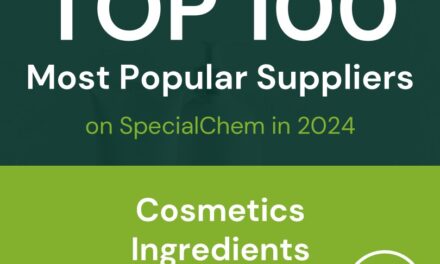The Shift Towards Sulfate-Free Shampoos: A Technical Perspective
Image used for illustrative purposes only
This article by Sharvari Chaudhary delves into the driving forces behind the sulfate-free revolution and explores the complex implications it holds for the future of haircare innovation. Let’s dive deeper into this paradigm shift and uncover how it’s reshaping the world of haircare formulation.
Have you noticed how “sulfate-free” has become a prominent claim on shampoo bottles across the market? This isn’t merely clever marketing—it represents a significant paradigm shift in the world of haircare formulation. As cosmetic chemists and researchers, we find ourselves at an interesting crossroads where consumer preferences, scientific advancements, and formulation expertise converge. The question that naturally arises is: what’s driving this move away from sulfates, ingredients that have been workhorses in shampoo formulations for decades? And perhaps more importantly for us as formulators, what are the technical implications of this shift?
UNDERSTANDING SULPHATES AND THEIR TRADITIONAL ROLE
Sulfates—primarily sodium lauryl sulfate (SLS) and sodium laureth sulfate (SLES)—have traditionally dominated shampoo formulations due to their excellent cleansing properties and cost-effectiveness. These anionic surfactants effectively remove sebum, dirt, and product buildup through their amphiphilic structure, which allows them to emulsify oils and wash them away during rinsing.

However, this same powerful cleansing action is precisely what has led to their reconsideration in modern formulations. The aggressive oil-stripping capability of sulfates can disrupt the natural moisture balance of both hair and scalp, potentially leading to issues that vary in severity depending on hair type, scalp condition, and individual sensitivity.
THE CONSUMER-DRIVEN MOVEMENT
The shift toward sulfate-free formulations has been notably consumer-driven, with several key factors at play:
- Increased awareness of hair science: Consumers are more educated about their hair’s specific needs and structure.
- Digital information sharing: Online communities have amplified concerns about harsh cleansers.
- Rise in reported scalp sensitivity: Approximately 60% of consumers report some form of scalp sensitivity.
- Natural and clean beauty movement: A general shift toward perceivably gentler ingredients.
- Specialized hair needs: Growing recognition of diverse hair types requiring customized care.
Research conducted across urban Indian markets shows that searches for “sulfate-free haircare” increased tremendously between 2020 and 2024, indicating significant consumer interest.
FORMULATION CHALLENGES
For cosmetic chemists, developing effective sulfate-free formulations presents several technical hurdles:
|
Challenge |
Technical Explanation |
Solution Approaches |
|
Reduced cleansing efficiency |
Non-sulfate surfactants typically have lower detergency |
Surfactant blends with optimized ratios |
|
Compromised foam profile |
Most alternative surfactants produce less abundant, less stable foam |
Foam boosters and stabilizers |
|
Viscosity control issues |
Salt response differs in non-sulfate systems |
Alternative thickening mechanisms |
|
Stability concerns |
Different interaction profiles with conditioning agents |
Modified stabilization systems |
|
Preservative efficacy changes |
Altered microbial environment in non-sulfate systems |
Adjusted preservation strategy |
SULPHATE FREE SURFACTANT SYSTEMS
Modern sulfate-free formulations typically utilize several alternatives:
Primary Mild Surfactants
- Glucosides: Decyl glucoside, lauryl glucoside (non-ionic, plant-derived)
- Sulfosuccinates: Disodium laureth sulfosuccinate (milder anionic)
- Glutamates: Sodium cocoyl glutamate (amino acid-based)
- Isethionates: Sodium cocoyl isethionate (mild anionic)
Secondary/Co-Surfactants
- Betaines: Cocamidopropyl betaine (amphoteric)
- Sultaines: Cocamidopropyl hydroxysultaine (amphoteric)
- Sarcosinates: Sodium lauroyl sarcosinate (mild anionic)
PROS AND CONS ANALYSIS
Advantages of Sulfate-Free Systems
- Reduced irritation potential: Particularly beneficial for sensitive scalps and eyes
- Better preservation of natural oils: Less disruption to the scalp’s lipid barrier
- Improved color retention: Less aggressive surfactants extend the life of hair color
- Better compatibility with specialized hair types: Particularly curly, coily, or textured hair types that tend toward dryness
- Improved environmental profile: Many alternatives have better biodegradability and aquatic toxicity profiles
Limitations and Challenges
- Cost implications: Alternative surfactants typically cost 30-50% more than traditional sulfates
- Technical complexity: Often requires more complex surfactant blends to achieve desired performance
- Sensory adaptations: Consumers may need to adjust expectations regarding foam and immediate “squeaky clean” feeling
- Formulation stability: May present greater challenges in ensuring long-term stability
- Usage considerations: May require more product or longer massage time for equivalent cleansing
FORMULATION GUIDELINES FOR SULPHATE FREE SYSTEMS
For formulators looking to develop effective sulfate-free shampoos, consider these practical guidelines:
1. Surfactant selection and blending:
- Start with a mild primary surfactant (8-12%)
- Add complementary co-surfactants (3-5%)
- Consider the critical micelle concentration (CMC) of your blend
2. Foam quality optimization:
- Incorporate foam boosters (0.5-2%)
- Consider natural foam enhancers
- Optimize the amphoteric:anionic ratio to enhance foam stability
3. Viscosity control:
- Explore polyacrylate crosspolymers (0.2-1.0%)
- Consider natural thickeners like guar hydroxypropyltrimonium chloride
- Develop salt curves specific to your surfactant blend
GUIDE TO SALT RESPONSE FOR SULPHATE FREE SURFACTANTS
|
CLASS OF SURFACTANT |
THICKNENING EFFECT TO SALT |
|
SULPHOSUCCINATES Eg: Disodium Laureth Sulphosuccinate |
— |
|
ACYL GLUTAMATES Eg: Sodium Cocoyl Glutamate |
— |
|
AMPHOTERIC SURFACTANTS Eg: Cocamidopropyl Betaine, Hydroxysultaines |
— |
|
NON-IONIC SURFACTANTS Eg: Alkyl Glucosides
|
— |
|
ACYL SARCOSINATES Eg: Sodium Lauryl Sarcosinate
|
+ |
|
FATTY ACID ISOTHIONATES Eg: Sodium Cocyl Isethionate |
++ |
|
FATTY ACID TAURATES Eg: Sodium Methyl Cocyl Taurate
|
+++ |
— Does not thicken with salt ++ Good thickening
+ Slightly thickens +++ Excellent thickening
4. Enhanced conditioning:
- Incorporate quaternary conditioning polymers
- Consider silicone alternatives for damaged hair types
- Explore natural oils at sub-conditioning levels (0.1-0.3%)
5. pH optimization:
- Target final pH 5.0-5.5 for optimal mildness and performance
- Consider the pH-dependent behavior of your surfactant blend
6. Preservation strategy:
- Select preservation systems validated specifically for sulfate-free matrices
- Consider potential interactions with complex surfactant blends
- Perform challenge testing under varied conditions
FUTURE DIRECTIONS
The sulfate-free movement continues to evolve, with several promising directions:
- Biosurfactants produced through fermentation processes
- Prebiotic formulations that support healthy scalp microbiome
- Solid format innovations reducing water content
Customizable systems that can adjust to individual needs

CONCLUSION
The shift toward sulfate-free formulations represents a noteworthy challenge and opportunity for cosmetic chemists. Rather than viewing this trend as merely marketing-driven, we should recognize it as a catalyst for innovation in cleansing technology. By mastering the technical complexities of alternative surfactant systems, formulators can develop next-generation haircare products that balance effective cleansing with improved mildness and sustainability.
For the Indian personal care market, with its diverse consumer base and growing preference for sophisticated yet gentle formulations, the sulfate-free movement offers significant potential for product differentiation and technical leadership. The successful formulator will be one who can navigate these challenges while delivering products that meet evolving consumer expectations without compromising on fundamental performance.

Sharvari Chaudhary is a seasoned Cosmetic Chemist with 14 years of experience transforming skincare and haircare visions into reality. Holding a B.Tech in Cosmetic Technology, she began her journey as a Research Trainee at Hindustan Unilever, then quickly rose through the ranks at Marico Limited, where her exceptional work on summer body lotion earned recognition from CEO Harsh Mariwala himself.
Since 2017, Sharvari has operated her own formulation consultancy and product development laboratory, helping startups navigate the complex world of cosmetic chemistry. With over 50 high-quality products in her portfolio, she specializes in new product development, formula optimization, reverse engineering, and ethical raw material sourcing.
Her expertise spans solutions for modern skin concerns like hyperpigmentation, acne, hydration, and aging, as well as hair damage remediation. Combining scientific precision with creative innovation, Sharvari brings a wealth of knowledge from industry giants to independent brands seeking to create effective, market-ready skincare and haircare products.
Subscribe to our free newsletter to read the latest news and articles before they are published.










What is JustLend?
Anyswap
Wow! Thank you! I constantly needed to write on my website something like that. Can I include a part of your post to my site?
I really glad to find this web site on bing, just what I was searching for : D likewise bookmarked.
justlend v1
coach for ambitious women
ton staking
I’ve been absent for a while, but now I remember why I used to love this web site. Thank you, I will try and check back more often. How frequently you update your website?
ton staking
Very interesting points you have mentioned, thankyou for putting up.
barcatoto
Tron Staking
ton staking
p2p USDT Osaka
automated DCA bot crypto
Tron Staking
Tron Staking
machine learning crypto trading
Tron Staking
how to get xBOO
Tron Staking
exchange USDT in Dallas
I’m truly enjoying the design and layout of your site. It’s a very easy on the eyes which makes it much more pleasant for me to come here and visit more often. Did you hire out a developer to create your theme? Great work!
p2p Tether California
where to exchange Tether in Dublin
best ontario online casinos
medyum almanya
convert USDT in Melbourne
Ziatogel
dingdongtogel
dingdongtogel
almanya medyum
togelon
Koitoto
Luxury777
Linetogel
Pasarantogel
shiokambing2
Danatoto
Luxury333
Linetogel
Danatoto
shiokambing2
Asian4d
Gametoto
Pokerace99
Sell My House Fast in Tampa, FL
Gametoto
Asian4d
Gametoto
Pokerace99
Saudaratoto
Sell My House Fast in Tampa, FL
injection moulding tool design
convert USDT in Hilo
sell USDT in Antalya
exchange USDT in Athens
licensed crypto exchange Saudi Arabia
convert USDT in Cascais
sell USDT in Abu Dhabi
cryptocurrency regulation Italy
Urgent crypto to cash Miami
sell USDT safely in Malta
Crypto verkopen voor contant geld Den Haag
Zamijeniti USDT za gotovinu u Zagrebu
USDT to Krone cash Oslo
Cómo vender criptomonedas en Madrid
Sell USDT for physical euros Monaco
Is it safe to sell crypto for cash in Novi Sad?
How to avoid crypto scams in Sweden
Best crypto exchange Manila
eu9
indotogel login
What are the fees for selling USDT in Argentina?
best crypto cash out options in argentina
Is it safe to sell crypto for cash in Bali?
Cash out USDT Istanbul
bk8 login
bk8 login
Hand Sanitisers
swap trx without kyc
USDT a efectivo Barcelona
Hand Sanitisers
tron bridge
goltogel
totojitu login
togel4d
Mariatogel
Mariatogel
Dolantogel
Bosstoto
Gengtoto
batman138 login
Bosstoto
udintogel login
barcatoto
Hometogel
Kepritogel
jonitogel
Sbototo
DefiLlama analytics
frax swap support wallets
Hometogel
Paraswap
Bandartogel77
Bk8
matcha swap
Bos88
Anyswap
Mantle Bridge
Frax Swap
Togelup
Bk8
Togelup
Aw8
Bk8
Base Bridge
defillama
defillama defi tracker
manta pacific
manta pacific
defillama token
defillama liquidity pools
wormhole portal
Non‑custodial, permissionless bridge connecting Ethereum, BNB Chain, and Manta Network.
Offers fast finality — asset transfers typically complete in 3–10 minutes.
Fully decentralized with audited smart contracts and validator network.
https://primeday.zohodesk.com/portal/en/kb/articles/top-10-cool-gadgets-on-amazon-for-2025
Conference Organisers